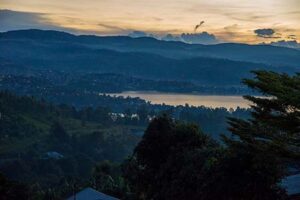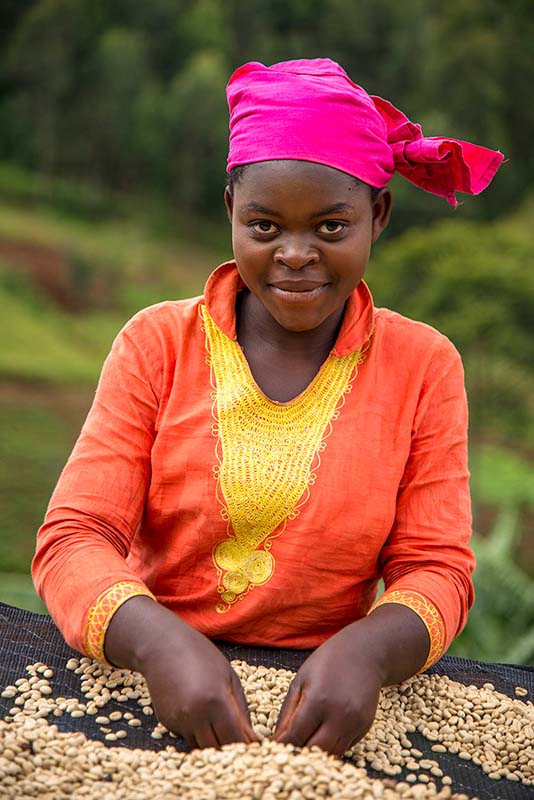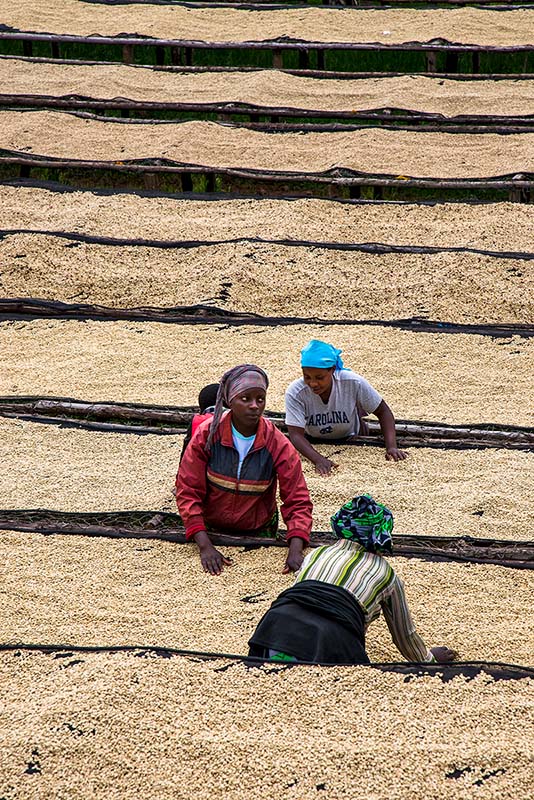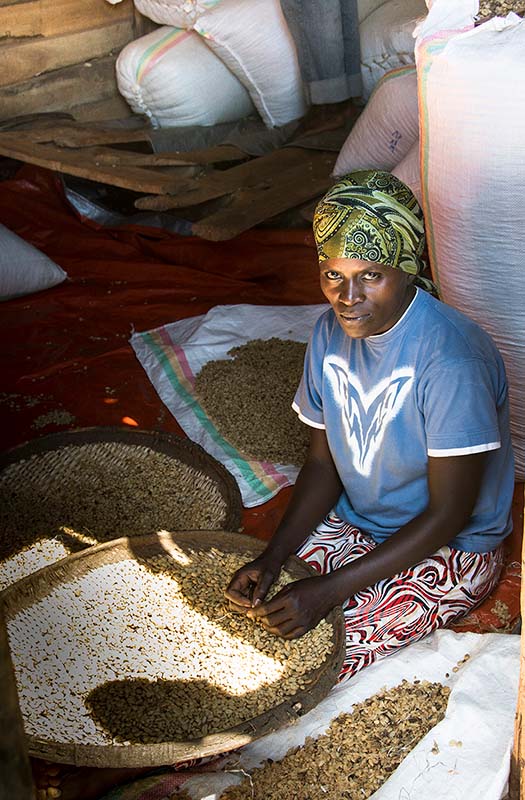Faces Behind Your Coffee


I was on a journey to the “land of a thousand hills” in the Lake Kivu region of Rwanda to see for myself the origin of the coffee bean in this small African country. Rwanda is one of a few countries in the world where the coffee bean is grown. Rwanda’s coffee industry dates back to 1904 when German missionaries introduced it in the country. In the 1930’s under Belgium influence they started full-scale production.
Keep reading
Our first stop was the Gashonga cooperative’s washing station. Gashonga produces a high quality fair-trade coffee known for its sweet flavor along with spice notes of clove and cinnamon. This station is where the farmers take their coffee after the red coffee cherries are picked from their trees. These coffee cherries are carried in sacks resting on the shoulders of the farmers as they make long sprints to carry the bags to their destination often on only muddy dirt roads. At the washing station local women workers line up in long rows hovering over the green beans that have been freshly separated from the red outer cherry exposing the light green bean underneath. It is the job of these women to sort through and dispose of the imperfect beans. They continue to do this while the bean dries over several days. Their work is momentarily interrupted when rain showers suddenly threaten to soak everything. These women hustle to cover the beans to protect them. As soon as it stops, they quickly work in unison to uncover and continuing to pick and sort. Wasting time is not an option.
I met an amazing group of widows who formed a smaller collective within the Gashonga coffee cooperative to help each other out. They started with 150 trees 20 years ago and today are up to 1500 trees. Their coffee is one of the higher quality beans in the area. Their product is highly sought after. I spent a few hours with these strong women wandering around their small mud homes observing their daily activities. They support each other in work and in life. If the crop produces profits, they collectively decide who is in the most need of a bed, books for the children or other essentials.
At the top of another winding hill, we visited with Jean Paul Ndamwerlera, an Agronomist and owner of the Liza Mill Washing Station. He named it after his then two year-old daughter, hoping as the quality and production grew that he would be able to help her make a better life for herself. Today Liza is six and her younger sister Carolina is four. His wife Pacifique runs the day-to-day operations of the station. His brother is their accountant. It is truly a family affair.
His father Stanislxs is also a coffee farmer and has been for more than 40 years. Jean Paul remembers helping his Dad sort the beans and hulling their outer parchment by hand on the floor at home before there were electric dry mills. Jean Paul has his girls come on Sundays to help out so that as he says “coffee will be in their blood” and they will understand the entire process. The younger daughter holds up one of the coffee cherries to show me what it looks like. Liza joins her Dad at the sorting station and helps hoist the beans high into the air to help the drying process. John Paul takes me on a “short” hike up behind the station and high into the hills behind. He shows me some of his newly planted coffee trees that will take three years to begin generating the red cherry beans. He has recently purchased more of this land and plans on continuing to plant new trees so that he can eventually produce more quality coffee.
And then the rain comes and the workers run to cover the beans. We run inside to the office to observe the bags of beans ready to be brought to the dry mill for final processing.
The next day we travel to Gisuma, another of the fair-trade Cooperatives, just in time to watch yearly bonuses being given out by Rob Fiedler, the owner of AfriCana Traders. Rob comes once a year to give out cows and goats to the top-producing farmers at the four cooperatives where he buys green coffee beans to be shipped directly to Toronto to be sold throughout Canada. His company is an example of connecting directly with the farmers to help them earn a living wage and to continue making their life and the lives of their children better. Cows and goats wander the grounds until they are united with their new deserving owners.
Finally we travel north of the city of Cyangugu to the remote Kinyaga Cooperative. The washing station overlooks a part of Lake Kivu at the bottom of a lush hill surrounded by coffee trees. We leave the truck and embark on the hike down the hill. The land here as in all of Rwanda is dense, lush and so very green. Kinyaga coffee has been reviewed as sweet, floral, and like putting a spoon of jam in your mouth.
Here we see the process of separating the red cherry from the bean before the drying out process begins. It takes about 3 weeks to dry the coffee beans at the coffee washing station before it is sent to a dry mill where the thin outer parchment is separated and you have green beans that are ready to be shipped world wide. These coffee beans are then roasted and ready to be ground and enjoyed.
Today, the Rwandan coffee industry is booming and producing some of the highest quality coffee in the world. And I will never drink another cup of coffee without remembering the many faces of the Rwandan farmers and the time and energy that went into producing such a labor-intensive incredible daily drink.





























